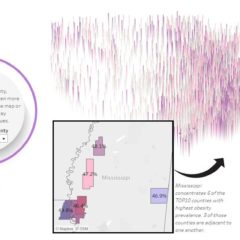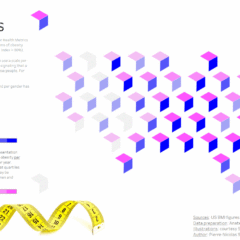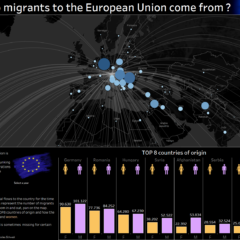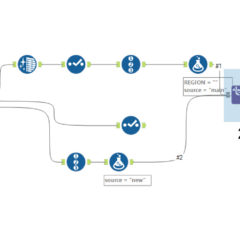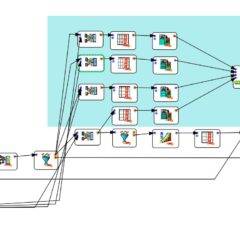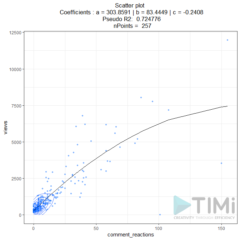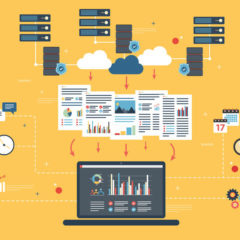LinkedIn: the sentiments expressed and their effect on virality
Everyone agrees that the content of LinkedIn posts is a determining factor in the probability that they go viral. So today, I’m not going to answer the question “What should we talk about on LinkedIn?” but rather “How should we talk about it?” I used a corpus of 4 million LinkedIn posts to measure the sentiments expressed and analyze the correlation with their virality. This analysis follows the one I published here on a set of 4.6 million posts and in...
The 3 factors that determine 55% of the success of your LinkedIn posts
Understanding how LinkedIn’s algorithm works is a necessity to stay visible on this social network. This article reveals the results of an analysis I realized using 4.599 million LinkedIn posts in 193 countries. The results are surprising and challenge a lot of preconceived ideas. Only 3 factors play a role in the visibility of LinkedIn posts. This article also includes the research results I have already published on the effect of hashtags, the influence of the word count, and the...
224 words, the magic number to boost the impact of your LinkedIn posts
Word count is one of the factors that determines the success of a post on LinkedIn, along with hashtags. I have made an analysis of nearly 5 million posts in 100 countries that shows a linear correlation between the word count of a post on LinkedIn and its number of likes/comments. Posts between 224 and 227 words are 6x more likely to get more than 100 reactions than the average. If you’re interested in this topic, subscribe to my...
How many hashtags should you put in your LinkedIn posts? [Research]
How many hashtags should you put in your LinkedIn posts to increase their visibility? By the way, is it a good thing to put hashtags, and how does the LinkedIn algorithm react? I have analyzed 4.988 million LinkedIn posts in more than 100 countries, and I will give you the answer in this article. If you want to receive more exclusive results by email, please subscribe to my newsletter and follow me on LinkedIn. Only for our subscribers: exclusive analyses...
Data Mining: Definitions, 5 Free Tools, and Techniques
After the collection and preparation process, data analysis is necessary to find meaning in a data set. Looking at a page of data does very little for building models of customer behavior, so we need an intelligent way (data mining) to sift through information. By using statistics-based approaches and algorithms, we can start to mine data. Only for our subscribers: exclusive analyses and marketing advice Email address * Subscribe By signing up, you agree to our...
AI enriches the experience of visitors to the Alechinsky exhibition
In a context where the Covid crisis severely impacts culture, it is more important than ever to build visitor loyalty. I had proposed different ways to improve the customer experience in museums, and today I suggest discovering an initiative of the Royal Museums of Fine Arts in Brussels. An exhibition dedicated to the Belgian artist Pierre Alechinsky has just opened and gives a very nice overview of his plethoric production. On this occasion, an interactive device using artificial intelligence allows...
The place of data wrangling in the data value cycle
In the world of data, data wrangling is a bit of a buzzword these days. We have already proposed a general overview here. In today’s article, we explain it in more detail and position data wrangling within the data value cycle. Summary Reminder on data wrangling Step 1: data acquisition Step 2: data storage Step 3: data exploitation Only for our subscribers: exclusive analyses and marketing advice Email address * Subscribe By signing up, you agree to our...
Excel dominates the business world… and that’s not about to change
Few brands have a 100% penetration rate. Microsoft is one of them. Even better, one of its products, Microsoft Excel, is used by 99.99% of the world’s businesses. Microsoft Excel is everywhere. Can’t stand it anymore? Well, you’re going to have to get used to it because it’s not going to change any time soon. But if Excel has undeniable qualities, we must also question its efficiency in performing specific processes. And this is probably where the problem...
The UK Data Ethics Framework Explained
First published in June 2018, the Government’s Data Ethics Framework is another way of protecting our sensitive information in a data-driven world. The framework was then updated in September 2020 to be more extensive and to create more awareness of these guidelines. Yet despite this, many are still unaware of what this framework actually is and what purpose it serves. That’s why we’ve put together this guide. Below, we’re going to explain the Data Ethics Framework...
Data wrangling: definition, steps, tools [guide 2021]
Data wrangling might sound like quite the intimidating tech term on the surface yet anyone can develop an understanding of this process with a little bit of time and effort. Data wrangling, also known as data munging, is part of the larger process of “data preparation”. Data wrangling is the process performed to collect, select, re-structure, enrich and ultimately transform information with the aim of answering a specific question. This overarching question is usually highly analytical....
ETL benchmark: how long does it take to process 1 billion lines?
In a previous article, I highlighted the importance of processing speed when choosing a data preparation solution (ETL). I made a first benchmark between Alteryx, Tableau Prep, and Anatella on a file of 108 million lines. This time I repeated the operation on 1.039 billion lines and added Talend to the benchmark. The results are unexpected since the processing speeds vary by a factor of 1 to 20. TEASER : stay tuned. In my next article I’ll show you a trick...
Data preparation: how to choose the right solution for your needs?
I regularly use 4 data preparation solutions: Alteryx, Tableau Prep, Talend, and Anatella. The G2 benchmark lists no less than 40 of them. This article explains why the G2 benchmark is not necessarily relevant and what criteria to use to compare the ETL (Extract – Transform – Load) solutions best suited to your needs. Summary What is an ETL? The G2 benchmark criteria The most important criteria for choosing an ETL, in my opinion Conclusion crédits : Shutterstock Introduction: what...
Benchmark: which ETL to choose to handle large files?
When it comes to data preparation, it is clear that a large part of the processes still takes place offline, with archives extracted from relational databases. And when these archives need to be manipulated by data engineers, it is essential to have an ETL that can handle the load. In today’s article, I propose to tackle the fascinating subject of large files by comparing 2 ETL’s that I use daily: Alteryx and Anatella. Business context: when are large...
ETL: use of ternary operators for data extraction in Excel
How to use an ETL solution to extract information from an Excel file and reconcile it? After explaining a method to automate the extraction from many Excel files, in today’s post, I will go into more depth and explain how I used ternary operators to extract the desired information. Presentation of the problem The problem I have faced is relatively standard. You have a poorly structured file that has been filled in by a user or...
How to automate the extraction of data from Excel files
This is the problem that I have been facing recently. A client asked me to process data from hundreds of Excel files. Frankly, I didn’t want to spend hours extracting this data manually. So, I automated the process with Anatella and visualized the data using Tableau afterward. Here’s a little tutorial on data preparation and an excellent way to process your data more efficiently with an ETL worthy of the name. If you only have 30 seconds using Anatella,...
Data preparation: definition, examples, advice [guide 2023]
To talk about data preparation, what better way to start than from observation. In the world of data, there is a rule that everyone knows: 80% of a data scientist’s time is spent preparing his data, and only 20% working on it, especially its visualization. This article will focus on data preparation: the most frequently encountered problems, tools, and trends. Let’s go for new data adventures! Summary Introduction Data preparation: definition The 5 steps of data preparation Data...
Data visualization: definition, examples, tools, advice [guide 2021]
Data Visualization, or DataViz, is the discipline that focuses on the graphical representation of raw data. The purpose of data visualization is to create value. The last few years have seen the emergence of new tools and practices around data visualization and new professions’ emergence. This article will start by giving you the definition of data visualization and illustrate with a concrete example of the 5 levels of data visualization. We will then cover the evolution of data...
[Podcast] Teaching children to use digital technology
Nathalie Kuborn (We Are Coders), Gaëlle Girardeau (Cood) and Christophe Coquis (Geek Junior) talk to us about learning about computers, digital technology and the introduction to digital culture for children: the market, courses and advice. The market for teaching digital technology to children The emergence of a need The market for computer-based learning for children is emerging. For Gaëlle, this can be explained by the fact that we are all increasingly equipped in terms of digital...
[Podcast] The essence of Data Art and Data Visualisation
Nicholas Rougeux defines himself as a “data artist”, and his talent for visualising data is obvious. So obvious that he markets his work in the form of posters and I even got one for my birthday 🙂 Run to his blog (www.c82.net) if you lack inspiration or if you want to see the best in DataViz. In this podcast, I talk with Nicholas about his creative process, his sources of inspiration, and of course, the technical aspects of...
Tutorial: How to create a Joyplot using Tableau
After having explained to you how to create an isometric hexmap, I now tackle a more difficult subject: creating a joyplot using Tableau. I used a joyplot in the visualisation I submitted to the IronViz. As this type of graph is relatively rare, and I’ve had some trouble getting it right, I thought a tutorial would be welcome. Summary Definition of joyplot Origin of the name “Joyplot” Tutorial on how to create joyplot using Tableau Some additional thoughts...
Covid-19: impact on the IT consulting market and outlook
The Covid-19 crisis has had a massive impact on the IT market. Some parts of this sector have benefited (think of everything that revolves around remote working), but others have also suffered enormously. This is the case of IT consultancy. According to a Whoz study published in June 2020, 13% of projects had been abandoned, and 21% had been put “on hold”. Jean-Philippe Couturier, the CEO of Whoz, discusses in this podcast the results of this research and...
Rethinking the customer experience in museums with (Big) data
How can Big Data help museums reinvent themselves? How can data collection techniques be used to understand visitors better? How can data be used to build visitor loyalty? In this article, we propose a series of reflections on current and future museographic devices and on “data” initiatives that can be put in place to improve the customer experience and increase visitor loyalty. Summary Introduction Museums in the Age of Big Data For better exploitation of digital traces Conclusion Sources Introduction...
Isometric Hexmap using Tableau: a step-by-step guide
As part of my participation in the Iron Viz 2020, I created a new type of visualisation using Tableau, which has received a lot of positive feedback. I called it ‘isometric hexmap’. In this article, I explain how to reproduce this type of representation and give you access to the source files. You can access the interactive version on Tableau Public. If you like this visualisation, feel free to leave a comment and to use it....
Tableau Iron Viz 2020: thoughts on my first participation
The Iron Viz is the “world championship” that crowns the 3 leading Tableau developers, a software that allows you to visualise the data. This year I decided to participate also (access my contribution here). In this article, I look back on my experience, what I learned from the preparation of the competition and the difficulties I encountered. 6 tips for a good #Dataviz Spend time choosing a rich, quality primary data source rather than making multiple joints. Enrich...
Migration to Europe: interactive visualisation using Tableau
How can migration to EU countries be represented attractively? This is the question I wanted to answer using Tableau Software. If the question was simple, the answer was not so simple, and it took me a few days of deliberation to find the right solution and the right design. Below I present it to you with the modus operandi to reproduce it. Only for our subscribers: exclusive analyses and marketing advice Email address * Subscribe By...
What do you have to talk about on LinkedIn to get likes and comments?
After analysing the best hours to post on LinkedIn, I tackled a much more difficult problem: determining which topics generated the most views and engagement on LinkedIn. In today’s post, I will show you the results I was able to achieve using 2 specific tools: Anatella for data extraction and preparation on the one hand, and Tableau for exploring and visualising the effects on the other. If you are interested in this type of analysis and...
What is the best time to post on LinkedIn?
In their attempt to understand how the LinkedIn algorithm works, users of this social network often debate the ideal time to put their content online. I decided to do some analysis to get to the bottom of the truth and myths in this story. If you are interested in this kind of analysis and want to do the same with your data, subscribe to our newsletter (below). When the procedure and tools are ready to be...
Fuzzy Matching with Alteryx: tests, results and comparison
Fuzzy matching is a handy technique in many everyday situations. Alteryx offers a Fuzzy Matching feature that I have compared to Anatella’s function. I had already talked about Fuzzy Matching in this post. The features of Fuzzy Matching in Tableau Prep builder not being convincing, I wanted to see what Alteryx had to offer. In the end, Anatella gives better results, and the programming of the ETL process is much more efficient. Only for our subscribers: exclusive...
Fuzzy matching: comparison of 4 methods for making a join
In a previous article, I shared with you a solution to make a fuzzy matching between 2 different tables. I had then compared 2 ETL (Extract Transform Load) solutions. Tableau Prep Builder did not achieve the desired result. So, I turned to Anatella. In today’s article, I explore the different Fuzzy Matching algorithms available in this tool and their effects. As you will see, an algorithm emerges as the winner of the confrontation. Introduction When you want to...
Linkedin algorithm: 1 reaction will get you 83 views
How does Linkedin algorithm influence? What is the correlation between the number of likes or comments and the number of views in LinkedIn? Everybody’s trying to understand LinkedIn’s algorithm. Some are even trying to hack it. While theories abound, no one knows how it works. I’ve rolled up my sleeves, and today I’m going to explain it to you, with a statistical model to back it up. BONUS: receive your personal statistical analysis I suggest you...
Fuzzy matching between tables: 2 ETL compared (Tableau Prep Builder vs Anatella)
If you are manipulating data for analysis or visualisation purposes, you may have encountered this problem before. You need to create a join between 2 databases, but the entries in the reference field are not the same. Differences in spelling, different terminologies, … the reasons are many and varied. During the research that I’m doing to visualise migration flows, I was confronted with this problem. I had to solve it by using an ETL (Extract – Transform...
New LinkedIn algorithm: here’s how to stay visible
Linkedin’s engineers published the recipe for their new algorithm on May 12, 2020. The least we can say is that it completely changes the practice of making a post go viral. If you want your LinkedIn posts to be seen (and incidentally become popular), read the following carefully. See also the “data” analyses that we dedicate to the factors that boost visibility on Linkedin: hashtags, word count, emojis. Only for our subscribers: exclusive analyses and marketing...
Connected insurance: reliability of connected wristbands and hacking
In today’s article, we will talk about the reliability of connected Fitbit wristbands and how they are being hacked. The phenomenon is still not very widespread in Europe, but in the United States, it has become a real problem. It is the owners of these connected bracelets who try to hack them. Why are they trying to hack them? We explain everything in this article. We take this opportunity to give you an analysis of the...
How to hack the recommendation algorithms?
Hacking a recommendation algorithm is an operation that can be very profitable. Indeed, some recommendation algorithms are ubiquitous in our digital life and strongly influence our behaviour. We have become dependent on algorithms without realising it. For example, 35% of purchases on Amazon are the direct consequence of an algorithmic recommendation. An algorithm suggests 80 % of movies watched on Netflix and 75% of videos on YouTube. Pagerank, Google’s algorithm, is probably the most studied recommendation...
Simon Weckert, a German artist, has succeeded in hacking Google Maps
Hack an algorithm? Not necessarily as complicated as it sounds, and the economic consequences can be significant. Indeed, everything today is governed by algorithms, especially recommendation algorithms. Hijacking a recommendation algorithm can, therefore, have considerable financial repercussions. In today’s article, we would like to present the project of Simon Weckert, a German artist who “hacked” the Google Maps algorithm. We also inform you that we have devoted a feature article to the hacking of recommendation algorithms...
2025: the end of personalisation algorithms?
At a time when Amazon already achieves 35% of its turnover thanks to the algorithmic recommendation and launches two new personalisation tools (Discover and Showroom), Gartner announces the end of personalisation algorithms by 2025. This ambiguous announcement seems to deserve a more in-depth analysis. Contents Infographics on personalisation algorithms The purpose of algorithmic personalisation Why abandon personalisation? Problem #1: data collection and integration Problem #2: ROI Conclusions Only for our subscribers: exclusive analyses and marketing advice...

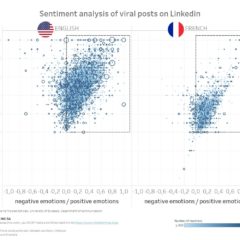

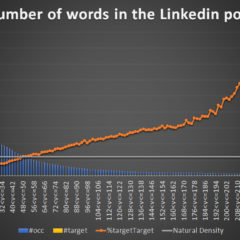
![How many hashtags should you put in your LinkedIn posts? [Research]](https://www.intotheminds.com/blog/app/uploads/analysis-hashtags-linkedin-240x240.jpg)




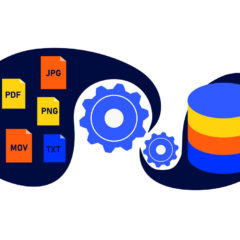
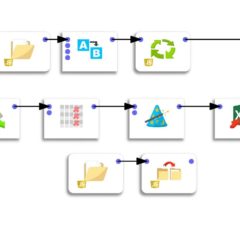
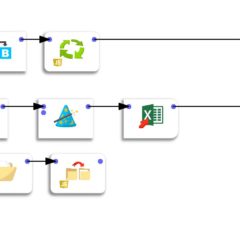
![Data preparation: definition, examples, advice [guide 2023]](https://www.intotheminds.com/blog/app/uploads/desk-research-data-graphs-figures-240x240.jpg)
![Data visualization: definition, examples, tools, advice [guide 2021]](https://www.intotheminds.com/blog/app/uploads/data-viz-240x240.jpg)
![[Podcast] Teaching children to use digital technology](https://www.intotheminds.com/blog/app/uploads/child-computer-coding-240x240.jpg)
![[Podcast] The essence of Data Art and Data Visualisation](https://www.intotheminds.com/blog/app/uploads/collage-closeup-240x240.jpg)
